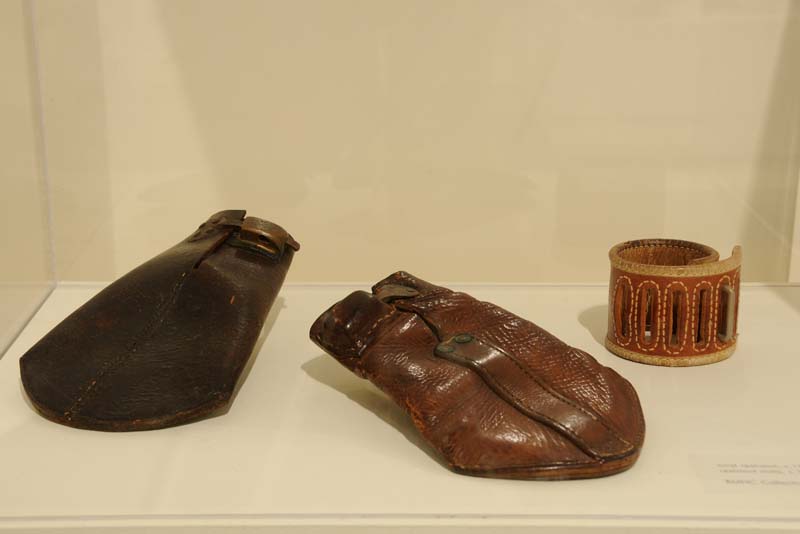The Use of Restraints

Leather
mitts used to prevent patients from using their hands. From Museum
1
| 2
Straightjackets, leather mitts, muffs, and wristlets were restraints used on violent patients who tore their own clothing, were liable to strike others, or destroyed property. These restraints were also used to prevent patients from scratching at sores, tearing off dressings, or interfering with attendants who were trying to wash wounds. Patients who refused to eat were restrained in order to insert feeding tubes, as proper nutrition was seen as a key component of moral therapy. There were, however, more restrictive restraint treatments, such as crib beds. These barred cribs confined patients to the bed, and were often used in conjunction with other forms of restraint.
Dr. Henry Landor, superintendent from 1870-1877, encouraged the reduction in restraint use. Unfortunately, much of the progress he wished to make was limited as a result of asylum overcrowding. His successor, Dr. R. Maurice Bucke, placed a renewed emphasis on moral therapy at the former London Asylum for the Insane (LAI). Patients and many patient advocates in the community viewed restraints as cruel and unnecessary form of treatment. Indeed, Dr. Bucke identified restraints as the cause of increased irritability among patients who were restrained in the 1880-1881 annual report. As such, the use of restraints was monitored, and staff members caught restraining patients without cause were reprimanded by the superintendent.
Dr. Bucke explained that restraints were used on women with more frequency because the criminally insane, predominantly men who committed violent crimes, were not housed at the former London Asylum for the Insane. As such, the former LAI received male patients who were easier to control. Consequently, Dr. Bucke wrote in his report to the inspector of asylums 1877-1880 that "Insane women on the whole are more unmanageable than are insane men."
During the 1870s, only 10% of patients admitted were subjected to the use of mechanical restraints. According to the annual asylum reports from 1877-1880, the use of restraints was reduced by 75%. During 6.7 million patient hours at this institution, only 24,463 were spent restrained in 1880. Dr. Bucke abolished the use of mechanical restraints in 1883, although their last reported use was in 1885. This reduction was symbolized by Asylum staff cutting up hand restraints in order to make slippers for patients.
Although annual reports no longer reported restraint use after 1885, further
research has identified patient files at other institutions which noted that
their use persisted subsequent to their alleged cessation.